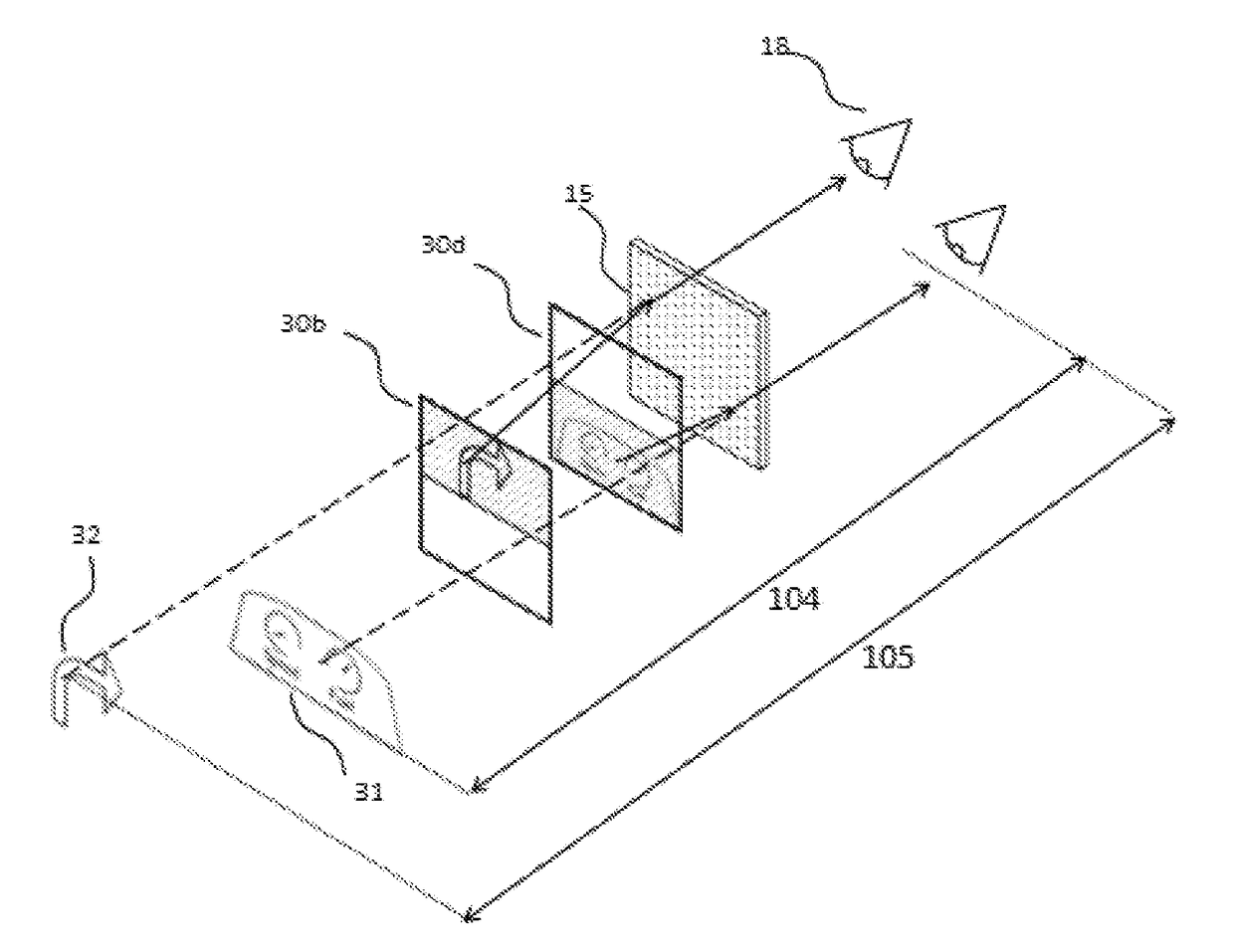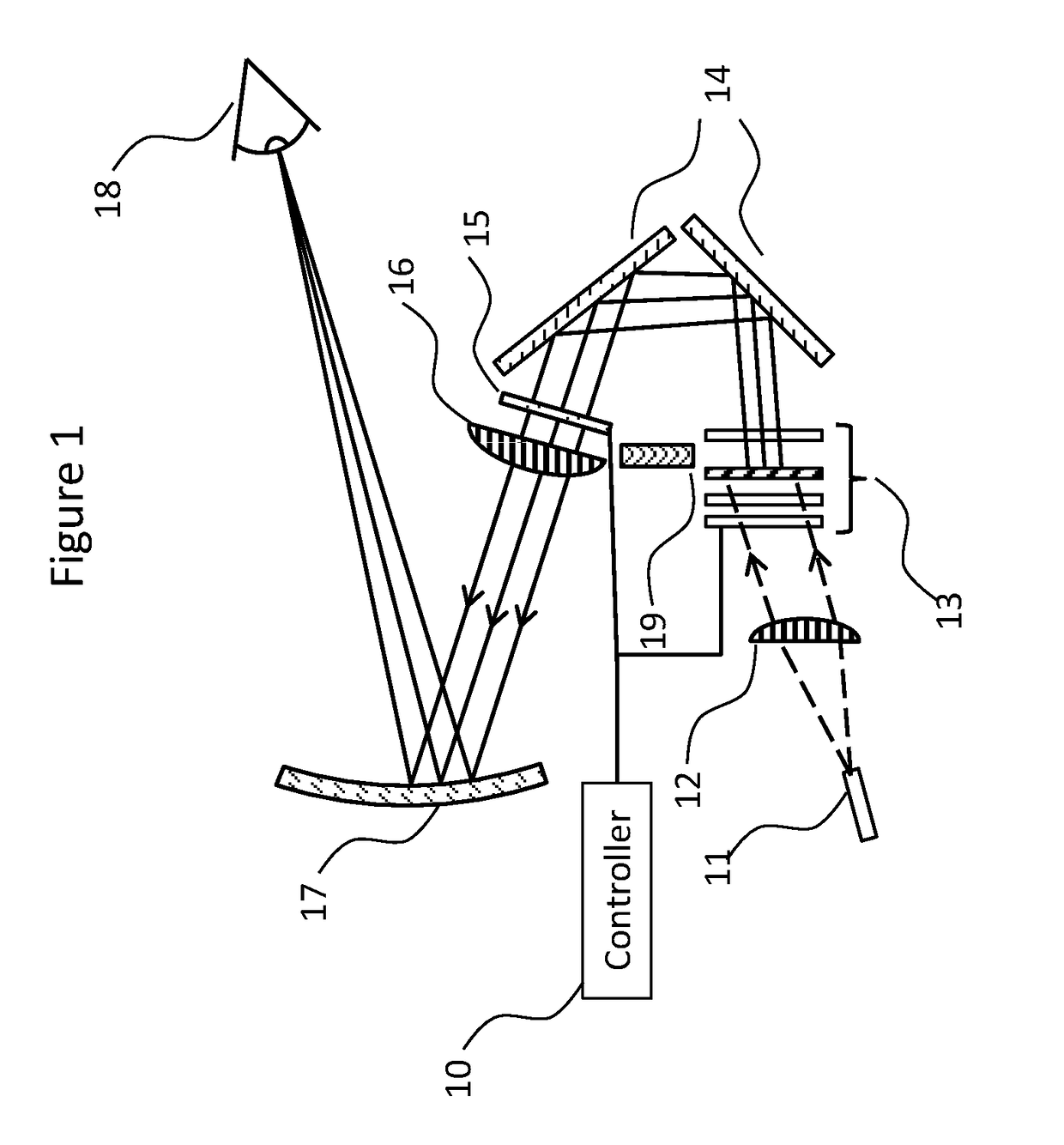Automotive head up display
a head-up display and automotive technology, applied in optics, instruments, electrical equipment, etc., can solve the problems of easy shock damage, mechanical wear, and limited information for drivers, and achieve the effect of reducing the number of head-up displays and reducing the number of displays
- Summary
- Abstract
- Description
- Claims
- Application Information
AI Technical Summary
Benefits of technology
Problems solved by technology
Method used
Image
Examples
third embodiment
[0108]FIGS. 8a-8b illustrate a third embodiment that includes a laser projector 11, switchable projector screens 30a-30d (collectively referred to as switchable projector screen 30), and variable power lens 15. This embodiment differs from the main embodiment as the switchable projector screens 30 are pixelated or partitioned such that only a portion of the same screen can be switched diffusive at any given time (rather than the whole screen being switched uniformly diffusive or transparent). The material of the screen could be, but is not limited to, PDLC.
[0109]This system enables images 31, 32 to be perceived by a driver 18 at different depths 104, 105, where the images are displayed to the driver simultaneously without the need of temporally switching on and off different screens.
[0110]FIG. 9 is the same embodiment shown in FIGS. 8a-8b and illustrates how the system can benefit from spatial multiplexing by showing a dashboard image 31 in one screen's partition 30d and traffic inf...
fourth embodiment
[0111]FIG. 10 illustrates a fourth embodiment where the projector 11 is arranged to be physically closer to the screen 40d than all other screens (40a-c), where 40d represent the screen that is optically closest to the driver 18. In this embodiment, the virtual image comes from back scattered light from the switchable screens 40. The screens 40 can be made of known materials with a satisfactory backscattering efficiency such as Polymer Stabilized Cholesteric Texture (PSCT). The last screen 40a (i.e., the screen optically furthest from the driver 18) may be replaced by a permanent diffuser. This means if the screens are anti-reflection coated, there will be no need to use a beam block in the system.
first embodiment
[0112]In addition, one of the mirrors 14 from the first embodiment can be replaced by a partially transparent mirror or a beam splitter 41 to allow the projector's beam to reach the screens, but the mirror can also remain fully reflective if it is not obscuring the projector's light. This embodiment allows more flexibility in the folding up of the HUD system without potentially exposing the projector's exit pupil to the driver when none of the screens are fully diffusive at any instance.
[0113]FIG. 11 illustrates a fifth embodiment where a stack of switchable screens 50 is used instead of the screens 13 proposed in the first embodiment. When the screens 50 are in the transparent state, the polarization state of light transmitted through the screens is preserved (i.e., the polarization of the light passing through the screen is unaltered or altered by a small amount such that a specular beam transmitted through the polarizer 51 would be safe for the driver). This allows polarized ligh...
PUM
 Login to View More
Login to View More Abstract
Description
Claims
Application Information
 Login to View More
Login to View More - R&D
- Intellectual Property
- Life Sciences
- Materials
- Tech Scout
- Unparalleled Data Quality
- Higher Quality Content
- 60% Fewer Hallucinations
Browse by: Latest US Patents, China's latest patents, Technical Efficacy Thesaurus, Application Domain, Technology Topic, Popular Technical Reports.
© 2025 PatSnap. All rights reserved.Legal|Privacy policy|Modern Slavery Act Transparency Statement|Sitemap|About US| Contact US: help@patsnap.com



